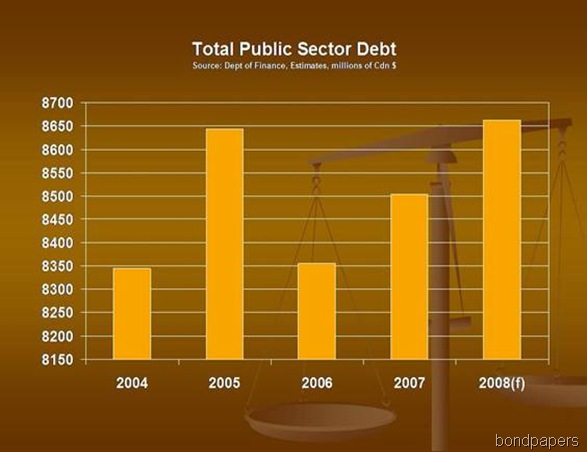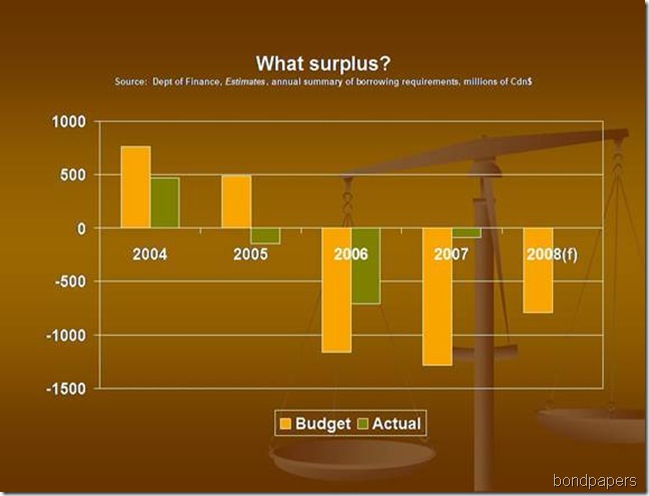Introduction
When Brian Peckford and Clyde Wells spoke of getting the provincial government off Equalization, they understood that such a development would merely reflect a greater strengthening of the provincial economy and society. Their policies and those of successive administrations aimed at economic development and diversification which would deliver a stronger economy that would in turn create wealth for Newfoundlanders and Labradorians.
The current state of affairs in Newfoundland and Labrador reflects more the result of those policies coupled with the unexpected good fortune of global economic conditions than it does a sustained commitment by the provincial government to implementing coherent strategies.
The following series of posts will offer 15 ideas on different areas of social, political and economic affairs aimed at strengthening Newfoundland and Labrador.
Strengthening the treasury
 1. Reduce the public debt by 50% within 10 years. Beginning in the early 1990s, successive administrations restructured public borrowings to convert debt held in foreign currency. As a result, the current burden on the treasury is significantly reduced and uncertainty due to currency fluctuations has been all but eliminated.
1. Reduce the public debt by 50% within 10 years. Beginning in the early 1990s, successive administrations restructured public borrowings to convert debt held in foreign currency. As a result, the current burden on the treasury is significantly reduced and uncertainty due to currency fluctuations has been all but eliminated.
Since 2003, the accumulated borrowings of the provincial government and its agencies has grown and the current government commitment is to increase public debt to meet any unforeseen needs. Direct debt had actually declined before 2003.
Debt servicing costs - paying only the interest on the debt - is one of the largest amounts spent by government annually. Paying down debt frees up more money to spend on needed programs and services and improves the ability of government to meet any economic downturns without resorting to borrowing.
 2. Balance the books, every year. Government surpluses in recent years have been built on the blind good fortune of astronomical oil prices. Those prices are an unreliable source of cash. On a cash basis, the provincial government has actually been in debt each year since 2005. That means new borrowing to add to the burden of public debt.
2. Balance the books, every year. Government surpluses in recent years have been built on the blind good fortune of astronomical oil prices. Those prices are an unreliable source of cash. On a cash basis, the provincial government has actually been in debt each year since 2005. That means new borrowing to add to the burden of public debt.
Balancing the books is possible. It just needs the political will to do it.
3. Limit annual spending increases to the rate of inflation. Provincial government spending has increased by as much as seven times the annual rate of inflation in each of the last three years. That's unsustainable in the long run and with the current economic crisis, the excesses of the past three years are about to catch up to everyone.
Limiting spending to the rate of inflations allows for natural increases and commits government to eliminate unnecessary, ineffective or wasteful spending.
4. Make non-renewable resources revenues a long term benefit by creating an investment fund, paying down debt and funding infrastructure.
5. Ensure that any new programs can be funded within the spending limits for annual increases and anticipated revenues. Review existing programs annually to ensure they meet objectives and are run as efficiently and effectively as possible.
-srbp-